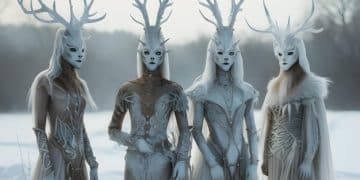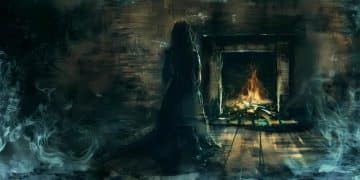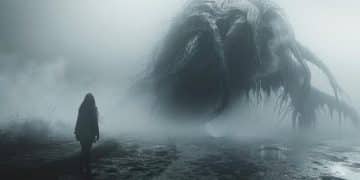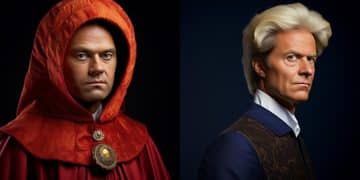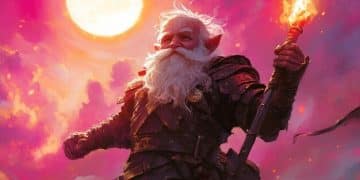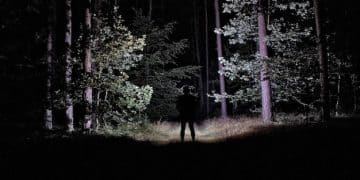Netflix’s The Witcher: Exploring the Monsters & Creatures of the Continent
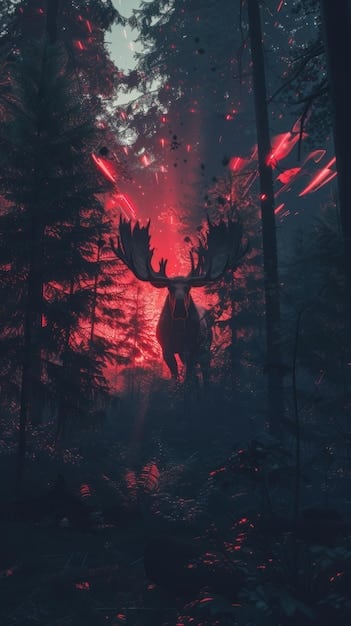
Netflix’s ‘The Witcher’ offers a rich bestiary of monsters and creatures, deeply rooted in Slavic folklore and Andrzej Sapkowski’s novels, bringing to life terrifying and fascinating entities that Geralt of Rivia must confront.
Dive into the dark and fantastical world of Netflix’s ‘The Witcher’ as we dissect the terrifying monsters and captivating creatures that populate the Continent. Journey with Geralt through the lore and origins of these formidable foes.
The Witcher’s Bestiary: An Introduction
Netflix’s ‘The Witcher’ doesn’t shy away from showcasing a vast array of monsters, each with its own unique characteristics and origins. These creatures aren’t just random adversaries; they are integral to the story and the world-building.
Exploring these monsters provides a deeper understanding of the Continent’s history, the Conjunction of the Spheres, and the delicate balance— or lack thereof—between humans and the supernatural.
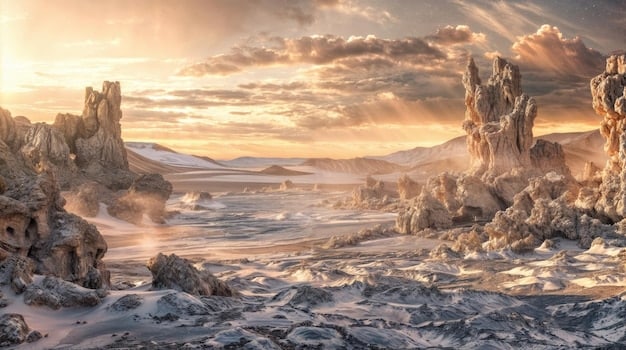
The Conjunction of the Spheres: A Monstrous Beginning
The Conjunction of the Spheres, a cataclysmic event in The Witcher’s lore, is responsible for bringing both humans and monsters to the Continent. This event shattered the natural order, blending different worlds and unleashing creatures of nightmare.
Understanding this event is crucial for grasping why Geralt exists and why he’s needed. The world wouldn’t need Witchers if not for the Conjunction.
The Role of Witchers: Monster Hunters for Hire
Witchers like Geralt are specially trained monster hunters, equipped with unique skills and mutations that allow them to combat these threats effectively. They represent one of the few lines of defence that exist for humans.
Their existence is often a lonely one, as they are both feared and needed, walking a fine line between saviour and outcast. They are experts in identifying and slaying monsters, skilled in both combat and the knowledge of monsters vulnerabilities.
- Monster Contracts: Witchers earn their keep by taking on monster contracts.
- Knowledge is Key: Knowing a monster’s weaknesses is as important as swordsmanship.
- Moral Ambiguity: Often, the line between monster and man blurs, posing difficult ethical questions.
In summary, the presence of monsters in Netflix’s ‘The Witcher’ stems from a specific event in the lore, paving the way for the protagonist who is essential to the narrative.
Iconic Monsters of The Witcher Series
The Witcher series features many monstrous entities, each contributing to the lore and danger of the world. Some of these creatures are more than mere beasts, having roots in Slavic myths and legends.
Here we examine some of the most iconic monsters that Geralt encounters.
The Leshen: Guardian of the Forest
The Leshen, or Leshy, is a formidable creature deeply rooted in Slavic folklore. In ‘The Witcher,’ Leshens are ancient beings, protectors of the forest, and fiercely territorial. They possess the power to control plants and animals, making them a significant threat.
Visually striking, they are often depicted with antlers, skeletal features, and imbued with the essence of the wilderness. Encounters with a Leshen are never simple, often involving complex moral choices.
The Kikimora: Arachnid of the Swamps
Kikimoras are large, spider-like monsters that dwell in swamps and marshes. These creatures are aggressive and pose a significant threat due to their numbers and venomous attacks.
In the series, Geralt encounters a Kikimora in the first episode, setting the stage for his monster-hunting profession. Their presence highlights the dangers lurking in the untamed corners of the Continent.
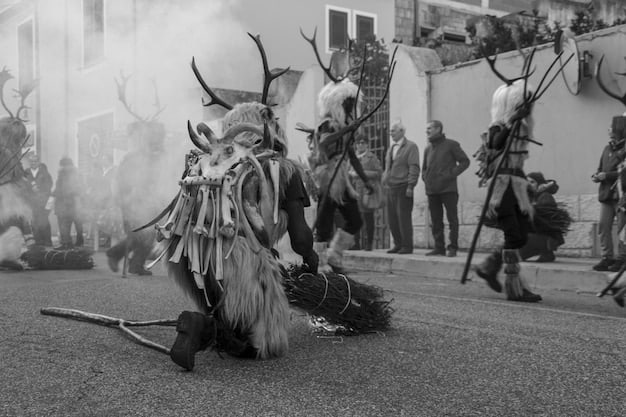
- Ghouls: Carrion feeders, often found in graveyards.
- Nekkers: Small, subterranean creatures that hunt in packs.
- Bruxae: Powerful vampires with a taste for human blood.
The monsters in The Witcher are both terrifying antagonists and important parts of the overall narrative arc, rooted historically in Slavic legends.
The Lore Behind the Monsters: Slavic Folklore
Many monsters featured in ‘The Witcher’ draw inspiration from Slavic folklore, adding depth and authenticity to the series. Understanding these origins enriches the viewer’s experience.
These aren’t just creatures of imagination; they’re rooted in cultural beliefs and ancient stories.
The Striga: A Transformed Princess
The Striga is one of the most tragic monsters in ‘The Witcher.’ Often a woman transformed into a monster by a curse, they combine elements of vampire and werewolf stories. The origins of the Striga are tragic, often involving curses and dark magic.
In the series, Geralt is tasked with lifting the curse from a Striga, a task that tests his skills and morality. Strigas serve as a narrative tool for discussing themes of identity and transformation.
Godlings: Spirits of Nature
Godlings, or spirits of nature, are another example of Slavic influence. These beings are tied to specific locations and often possess unique powers. They are not always malevolent, but their interference can cause trouble.
These creatures often highlight the respect and understanding of the natural world, a common thread in Slavic myths. They embody the spirits of the Wild Hunt and Slavic lore.
By focusing on roots in Slavic legends, the monsters in The Witcher are more than just monsters. They become part of a rich history.
Geralt’s Arsenal: Fighting the Monsters
Geralt of Rivia’s effectiveness as a monster hunter comes not only from his physical prowess but also from his knowledge, preparation, and arsenal of tools. He uses a distinct set of weapons and methods.
He’s more than just a warrior; he’s a scholar of monsters, prepared both physically and mentally.
The Two Swords: Steel and Silver
Geralt famously carries two swords: one steel and one silver. The steel sword is for humans and non-magical creatures, while the silver sword is reserved for monsters vulnerable to its properties. This choice speaks to Geralt’s profession.
The silver sword, while effective against monsters, is softer and more expensive. He must constantly weigh costs and benefits. They are an integral element in Geralt fighting the monsters on his journeys.
Potions and Signs: Enhancing Abilities
Witchers use potions to enhance their senses, strength, and speed. These concoctions are often toxic and dangerous, but they provide a crucial edge in combat. In addition to potions, Witchers utilize magical signs, simple spells that can be cast quickly.
These abilities aid them in battle against the terrifying entities they face. It’s a key element in their preparation arsenal.
- Igni: A burst of flames.
- Quen: A protective shield.
- Aard: A telekinetic blast.
Clearly, the Witcher arsenal enables him to fight the monsters as he comes up against them in the Netflix episodes.
The Moral Ambiguity of Monster Hunting
The life of a Witcher is not black and white. Often, Geralt is faced with moral dilemmas that challenge his beliefs. The monsters are not always evil, and humans are not always innocent.
This ambiguity explores deeper themes and makes the Witcher more than just a simple monster hunter.
Monsters as Victims: Challenging Perceptions
Sometimes, monsters are the victims of circumstance, driven to violence by fear or desperation. Other times, they are simply trying to survive, much like any other creature. He doesn’t always kill monsters, even when he can.
Geralt often faces difficult choices, questioning whether he should kill a monster or try to find a peaceful resolution. Each one weighs him down as he looks at the potential solutions.
Humans as Monsters: The Real Evil?
Conversely, humans can be more monstrous than any beast. Greed, cruelty, and prejudice can drive people to commit unspeakable acts. Geralt often finds himself caught in the middle, forced to choose the lesser of two evils.
The Witcher raises questions about the nature of evil and challenges viewers to consider who the real monsters are. Humans are a regular cause of havoc.
Therefore, it is clear that the show asks us if monsters are always evil, or if sometimes the monsters are actually humans?
The Future of Monsters in The Witcher
As ‘The Witcher’ continues, the series is expected to delve deeper into the lore of monsters, introducing new creatures and exploring their origins. The series remains a treasure trove of lore.
There seems to be no limit to the monsters that the world can offer Geralt, and vice versa.
Expanding the Bestiary: New Threats on the Horizon
Future seasons could introduce monsters from other regions of the Continent, each with their own unique adaptations and threats. New creatures and new tales lead to expanding possibilities and the viewers are left wanting more.
Audiences can look forward to more terrifying and captivating creatures brought to life on screen.
Deeper Lore: Unveiling the Mysteries
The series could also explore the deeper lore behind the monsters, revealing more about their origins and their connection to the Conjunction of the Spheres. Discovering where the monsters come from helps the viewers understand their place.
It’s safe to expect many narrative threads to continue to be built upon, giving viewers further insights into the world.
| Key Point | Brief Description |
|---|---|
| ⚔️ Witcher’s Role | Hunters tasked with eliminating monsters for coin, often facing moral dilemmas. |
| 🌲 Slavic Lore | Many monsters are based on Slavic legends, grounding The Witcher in rich mythological roots. |
| 🗺️ Conjunction | Event that brought monsters and men to the Continent. |
| 🛡️ Geralt’s Arsenal | Swords, potions, and signs enable Witchers to battle various monsters. |
Frequently Asked Questions
▼
The Conjunction of the Spheres was a cataclysmic event that merged multiple dimensions, bringing monsters and humans to the Continent. It fundamentally altered the world and created the need for Witchers.
▼
Geralt carries a steel sword for fighting humans and non-magical beings and a silver sword specifically for monsters vulnerable to silver. Each serves a specific purpose based on his enemies.
▼
No, not all monsters are inherently evil. Some are victims of circumstance, driven by survival or curses. The series often explores the moral ambiguity of monster hunting and challenges perceptions.
▼
Many monsters and storylines in The Witcher are inspired by Slavic folklore, adding depth and authenticity to the series. These roots enrich the world and provide a cultural context for the creatures.
▼
Geralt frequently uses signs like Igni (a burst of flames), Quen (a protective shield), and Aard (a telekinetic blast) to aid him in combat. Each sign offers a tactical advantage against certain creatures.
Conclusion
Exploring the monsters and creatures of ‘The Witcher’ reveals a complex and captivating world, deeply rooted in lore and Slavic folklore. These creatures are not merely adversaries; they are integral to the story, the characters, and the themes that make ‘The Witcher’ a unique and compelling series.
